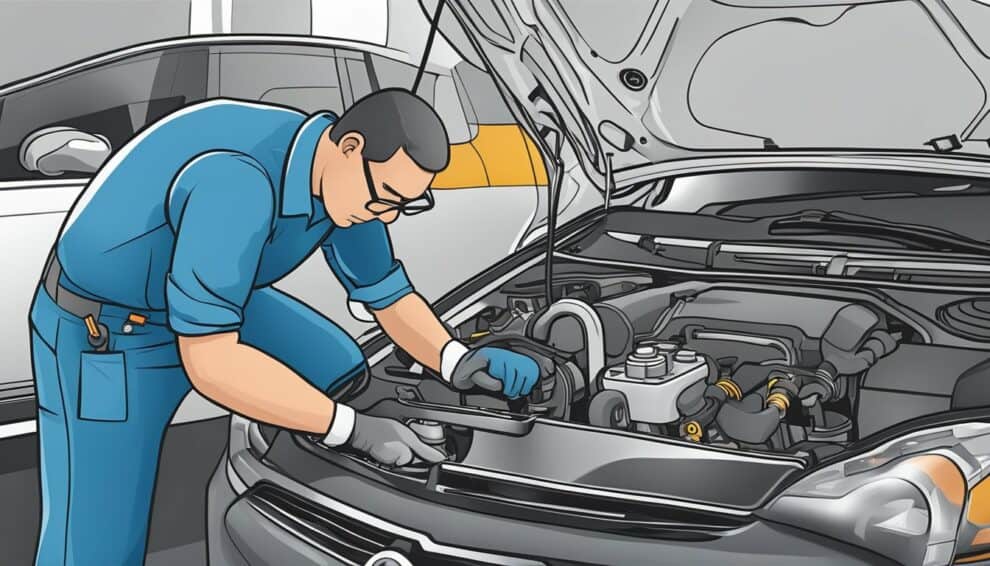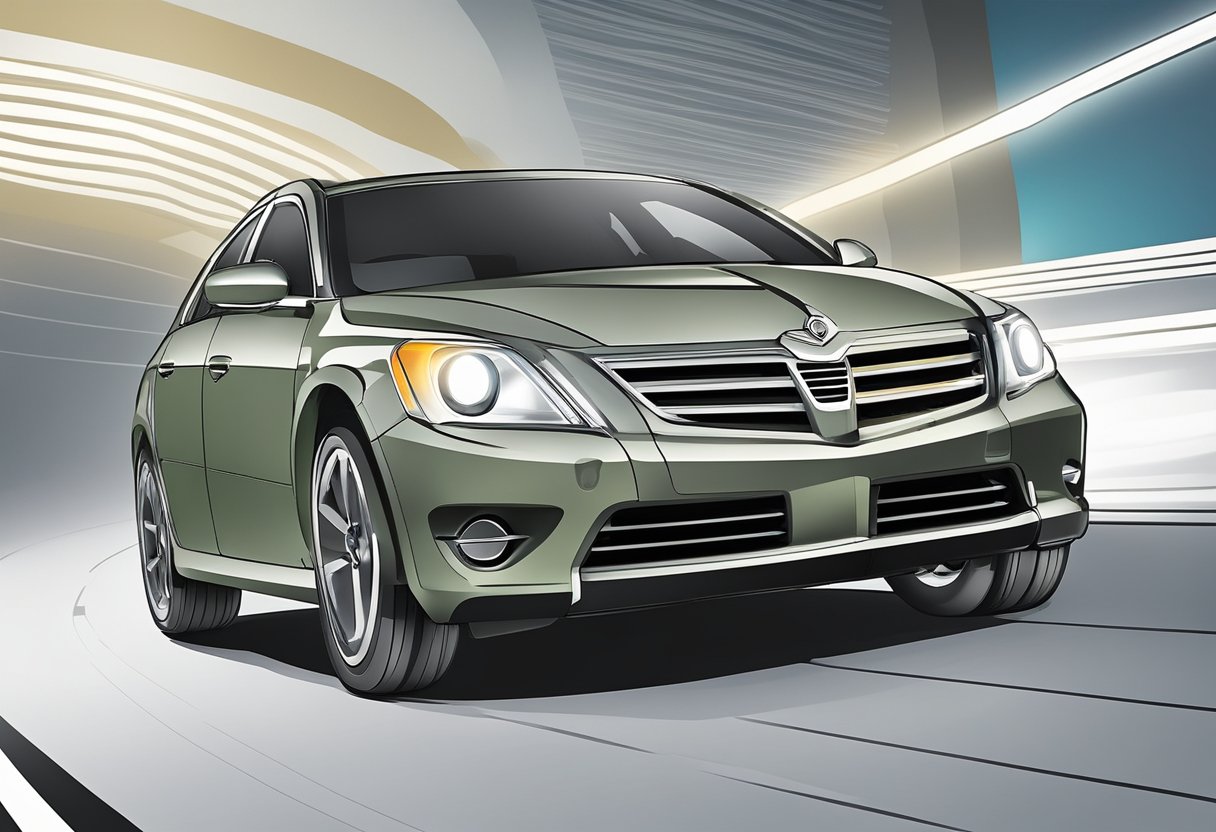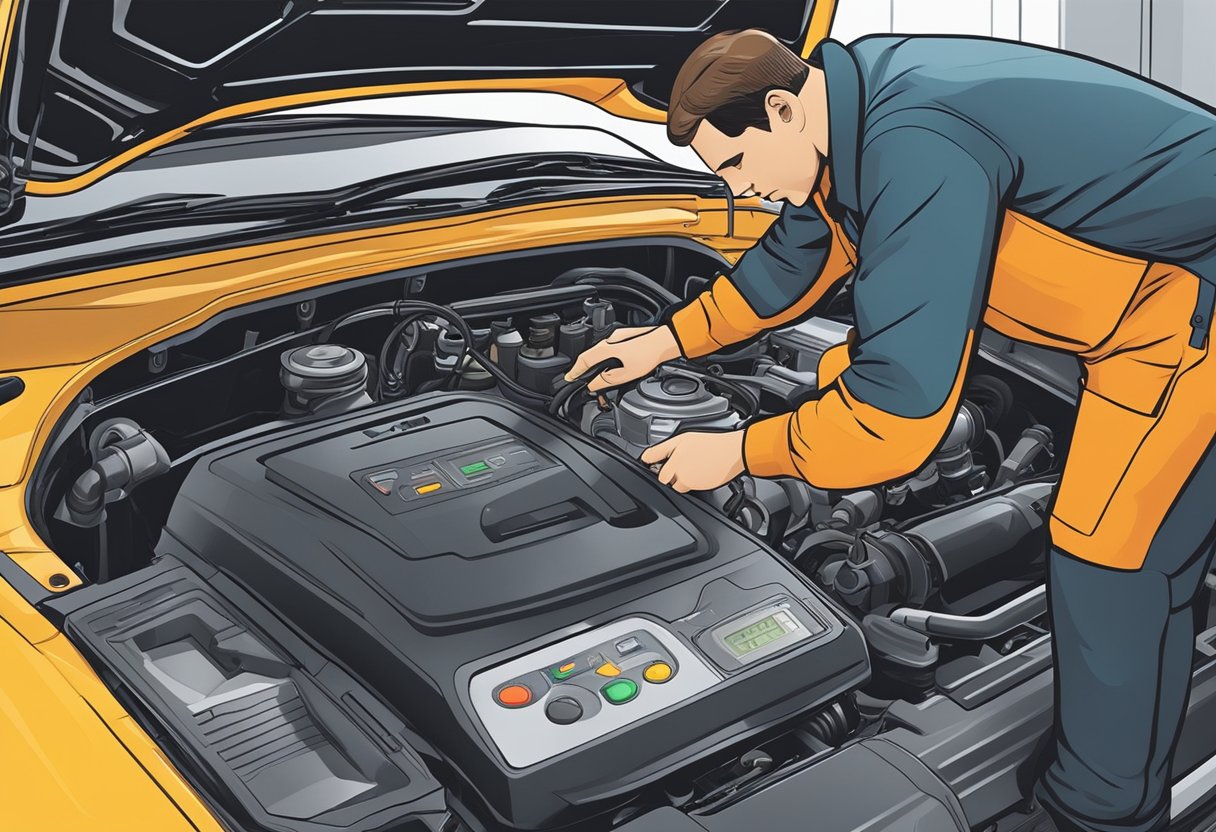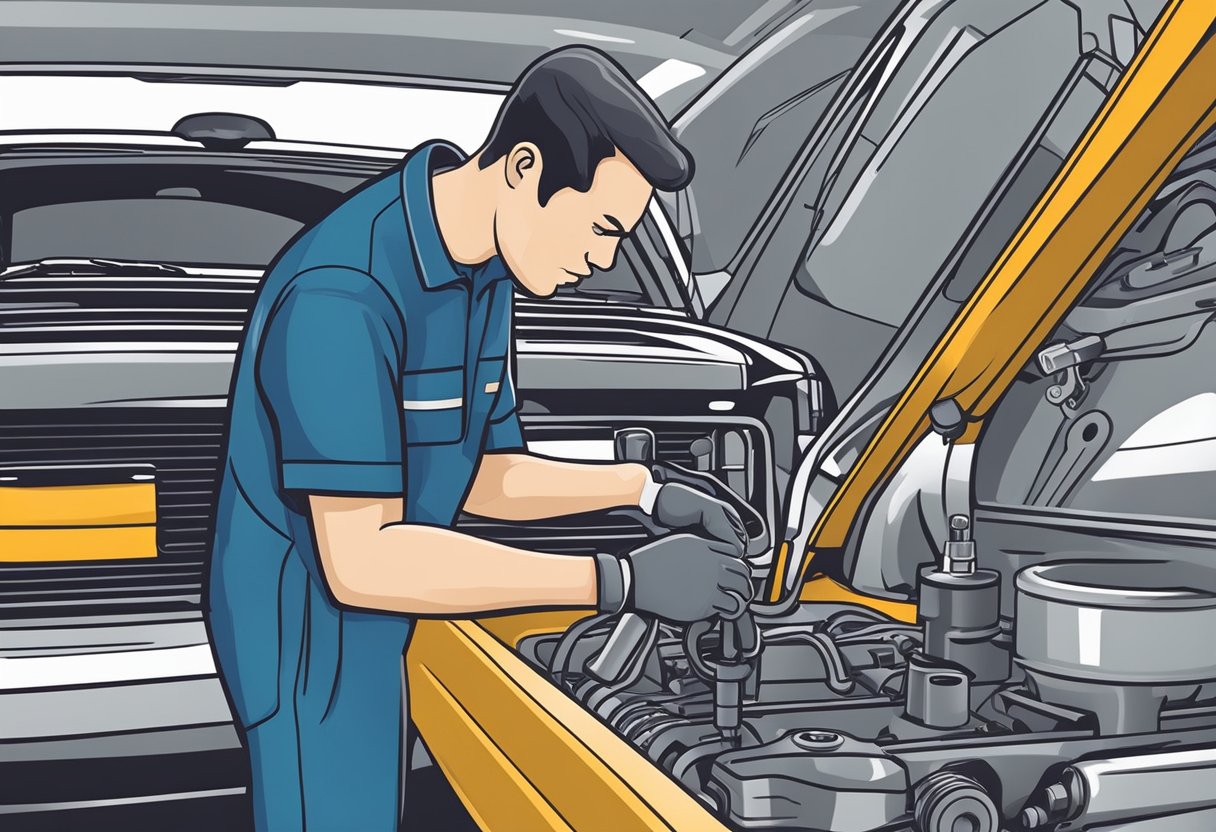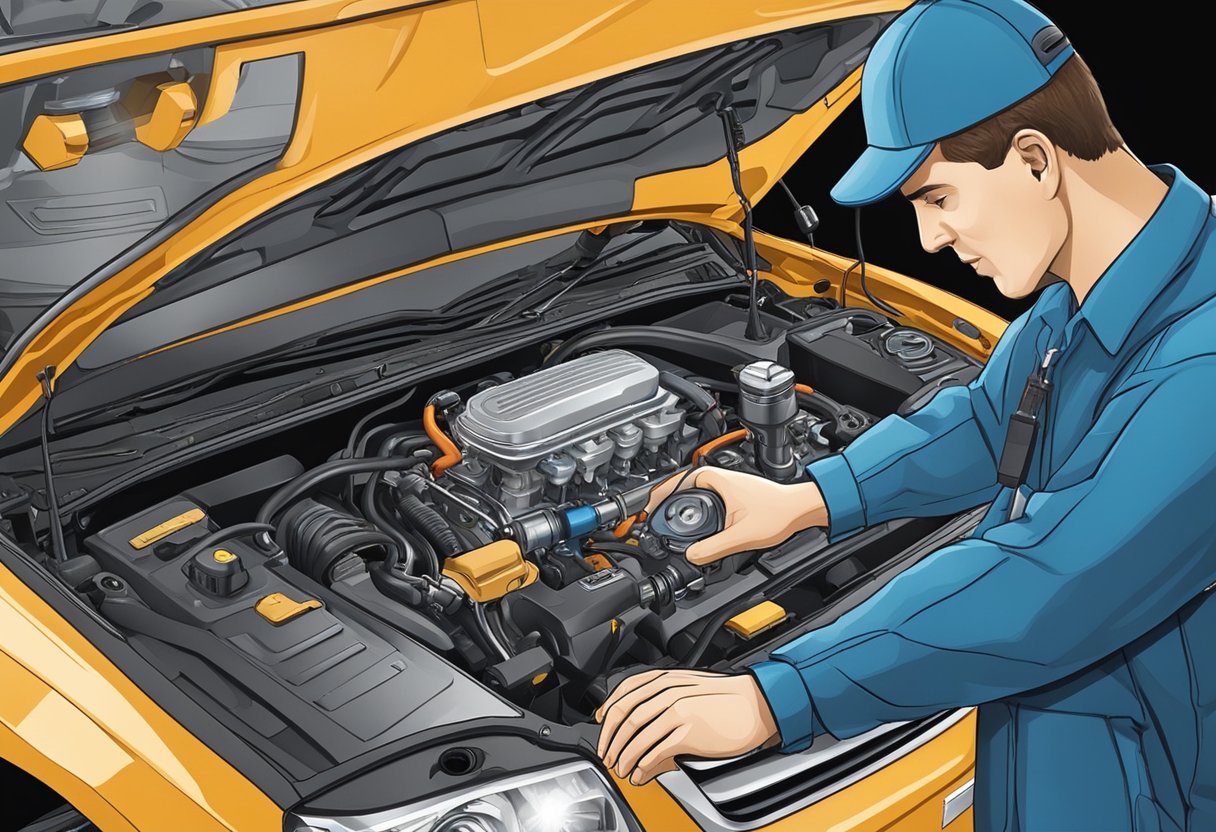Is your vehicle’s check engine light on? If so, you may have encountered the P0330 code, indicating a problem with your knock sensor. While this issue may seem minor, it can have a significant impact on your vehicle’s performance and fuel efficiency. In this article, we’ll explore the ins and outs of the knock sensor and how to address the P0330 code for optimal performance.
The knock sensor is a crucial component of your vehicle’s engine management system. It detects vibrations caused by engine knock, which can occur when the air/fuel mixture in the combustion chamber ignites prematurely. When the knock sensor detects these vibrations, it sends a signal to the engine control module (ECM), which adjusts the ignition timing to prevent knock from occurring. However, if the knock sensor itself is malfunctioning, it can cause a variety of issues, including decreased fuel efficiency, reduced engine power, and increased emissions.
Understanding the P0330 Code
Definition and Causes
If you own a vehicle, you may have come across the P0330 code. This code is related to the knock sensor, which is an essential component of your engine’s performance. The knock sensor is responsible for detecting vibrations in the engine caused by detonation or knocking. When the sensor detects these vibrations, it sends a signal to the engine control module (ECM) to adjust the ignition timing to prevent further knocking.
The P0330 code is triggered when the ECM detects a problem with the knock sensor circuit. This can be caused by a faulty knock sensor, damaged wiring, or a problem with the ECM itself. In some cases, the code may be triggered by a mechanical problem with the engine, such as a damaged piston or connecting rod.
Symptoms of a Faulty Knock Sensor
A faulty knock sensor can cause a number of problems with your vehicle’s performance. One of the most common symptoms is a decrease in power and acceleration. This is because the ECM may be adjusting the ignition timing incorrectly due to a faulty signal from the knock sensor.
You may also notice an increase in fuel consumption, as the engine may be running less efficiently. Additionally, you may experience rough idling or stalling, as the engine struggles to maintain a steady idle speed.
If you suspect that your vehicle may have a problem with the knock sensor, it is important to have it diagnosed and repaired as soon as possible. A faulty knock sensor can cause serious damage to your engine if left untreated.
Diagnostic Procedures
Initial Inspection
When diagnosing a P0330 code, the first step is to perform a visual inspection of the knock sensor and its wiring. Look for any signs of damage or wear, such as frayed wires or cracked housing. Ensure that the sensor is properly connected and securely fastened to the engine block.
Next, check the engine oil level and quality. Low oil levels or dirty oil can cause false readings from the knock sensor. Additionally, inspect the engine for any signs of damage or wear that could be causing excessive engine vibration or knocking.
Technical Diagnostic Steps
If the initial inspection does not reveal any issues, it’s time to move on to more technical diagnostic procedures. Use a diagnostic scanner to retrieve any stored codes, and check for any other related codes that may be present.
Next, perform a resistance test on the knock sensor to ensure that it is functioning properly. Consult the vehicle’s service manual for the correct specifications and testing procedure.
If the knock sensor passes the resistance test, perform a voltage test to ensure that the sensor is sending a signal to the engine control module (ECM). Again, consult the service manual for the correct specifications and testing procedure.
If the knock sensor is functioning properly and sending a signal to the ECM, the issue may lie with the ECM itself. In this case, it may be necessary to replace the ECM or have it reprogrammed by a qualified technician.
By following these diagnostic procedures, you can accurately diagnose and address the P0330 code for optimal engine performance.
Repair and Replacement Guidance
Tools and Equipment Needed
Before starting the replacement process, you will need to gather a few tools and equipment. Here is a list of what you will need:
- Socket set
- Ratchet
- Torque wrench
- Jack and jack stands
- Knock sensor replacement kit
- Cleaning solution
- Towels
Make sure you have all the necessary tools and equipment before beginning the replacement process.
Step-by-Step Replacement Process
Replacing the knock sensor can be a straightforward process if you follow the steps correctly. Here is a step-by-step guide to help you replace the knock sensor:
-
Disconnect the battery – Before starting any work on your vehicle, disconnect the battery to prevent any electrical shocks.
-
Locate the knock sensor – The knock sensor is usually located on the engine block, near the intake manifold.
-
Remove the electrical connector – Use a socket set to remove the electrical connector from the knock sensor.
-
Remove the old knock sensor – Use a socket set to remove the old knock sensor from the engine block.
-
Clean the area – Use a cleaning solution and towels to clean the area around the knock sensor.
-
Install the new knock sensor – Install the new knock sensor into the engine block using a torque wrench to tighten it to the manufacturer’s specifications.
-
Reconnect the electrical connector – Reconnect the electrical connector to the new knock sensor.
-
Reconnect the battery – Reconnect the battery and start the engine to ensure the new knock sensor is working correctly.
By following these steps, you can successfully replace your knock sensor and address the P0330 code for optimal performance.
Can Fixing the MAP Sensor Signal also Improve Knock Sensor Performance?
Understanding the intricacies of automotive sensors can be daunting. However, a clear guide to understanding code can help demystify the process. When it comes to fixing the MAP sensor signal, it’s worth considering its potential impact on knock sensor performance. By accurately interpreting and addressing any code-related issues, a more optimized and efficient system can be achieved.
Post-Repair Testing
After replacing the knock sensor and addressing the P0330 code, it’s important to conduct post-repair testing to ensure optimal performance. This section will cover two key aspects of post-repair testing: verifying sensor functionality and ensuring code clearance.
Verifying Sensor Functionality
To verify that the new knock sensor is functioning properly, you can use a diagnostic tool to monitor the sensor’s output. Start by connecting the diagnostic tool to the vehicle’s OBD-II port and selecting the appropriate menu for knock sensor data. Then, start the engine and monitor the sensor’s output while the engine is running.
If the sensor is functioning properly, you should see a steady stream of data indicating that the sensor is detecting engine knock. If the sensor is not functioning properly, you may see erratic or inconsistent data, or no data at all. In this case, you may need to replace the sensor again or check for other issues that could be affecting its performance.
Ensuring Code Clearance
After replacing the knock sensor and addressing the P0330 code, it’s important to ensure that the code has been cleared from the vehicle’s computer. This can be done using a diagnostic tool or by disconnecting the vehicle’s battery for a few minutes.
Once the code has been cleared, it’s important to monitor the vehicle’s performance to ensure that the code does not reappear. If the code does reappear, it may indicate that there is still an issue with the knock sensor or another component in the engine. In this case, further diagnostics may be necessary to identify and address the root cause of the issue.
Preventive Measures and Maintenance Tips
To prevent the P0330 code from appearing and ensure optimal performance of your vehicle, there are several preventive measures and maintenance tips you can follow.
Firstly, make sure to regularly check and replace your engine oil as per the manufacturer’s recommendations. Dirty or low engine oil can cause the knock sensor to malfunction and trigger the P0330 code.
Secondly, keep your engine clean and free of debris. A dirty engine can cause the knock sensor to misread engine vibrations and trigger the P0330 code.
Thirdly, avoid harsh driving conditions such as sudden acceleration or hard braking. These driving conditions can cause excessive engine vibrations and trigger the knock sensor, leading to the P0330 code.
Lastly, consider installing an aftermarket knock sensor or upgrading your current one. Upgraded knock sensors can provide better performance and reliability, reducing the likelihood of triggering the P0330 code.
By following these preventive measures and maintenance tips, you can ensure your vehicle runs smoothly and avoid the hassle of dealing with the P0330 code.
As an Amazon Associate we earn from qualifying purchases.







